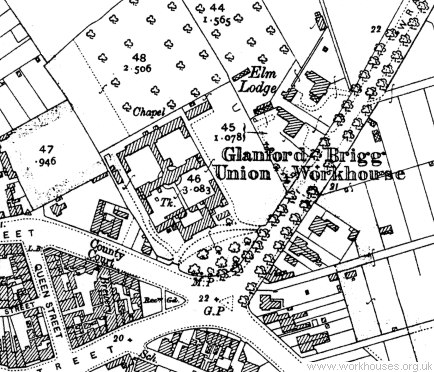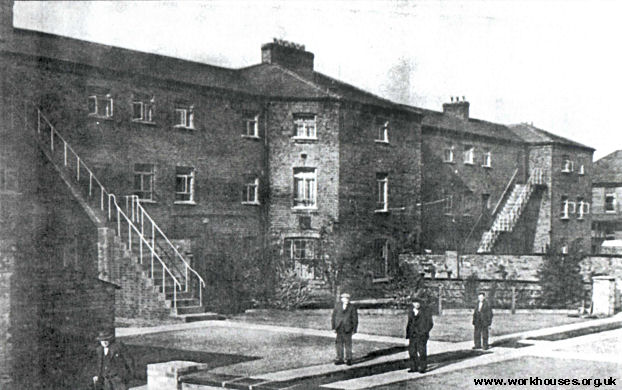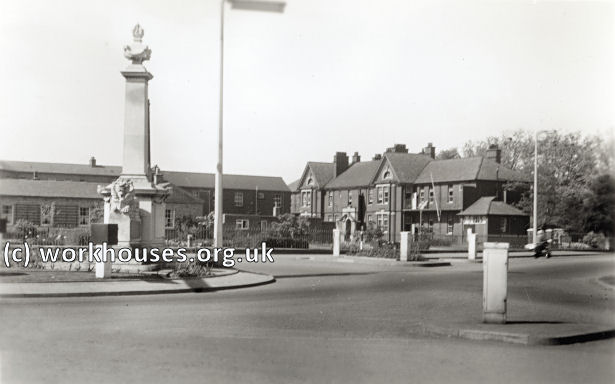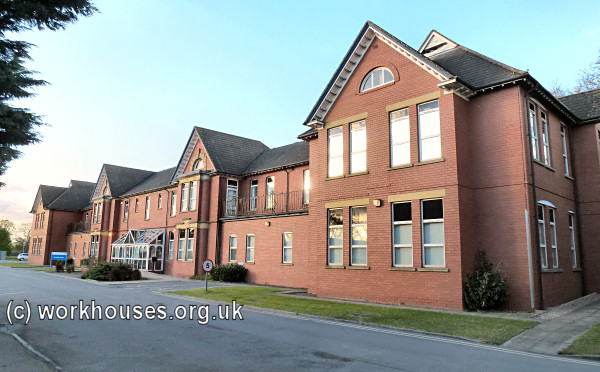Glanford Brigg, Lincolnshire
Up to 1834
In 1701, Christopher Benton bequeathed the Chantry House in Barton upon Humber as an almshouse for the poor. It was converted into a workhouse in 1749.
A parliamentary report of 1777 listed parish workhouses in operation at "Glamford Briggs" (for up to 10 inmates), Barton upon Humber—St Mary (20), and Kirton (15).
After 1834
Glanford Brigg (also seen spelt as Glandford Brigg or Glandford Briggs) Poor Law Union was formed on 18th January 1837. Its operation was overseen by an elected Board of Guardians, 54 in number, representing its 50 constituent parishes as listed below (figures in brackets indicate numbers of Guardians if more than one):
County of Lincoln: Appleby, Ashby, Aulkborough, Barnet-by-le-Wold, Barrow, Barton [upon Humber] St Mary and St Peter (3), Bonby, Bottesford, Broughton, Burton-upon-Stather, Bromby, Burringham, Cadney-cum-Housham, Cleatham, Crosby, Croxton, East Butterwick, East Halton, Elsham, Flixborough, Frodingham, Glandford Brigg (2), Goxhill, Hibaldotow, Holm, Horkstow, Kirmington, Kirton-in-Lindsay (2), Manton, Melton Ross, Messingham, North Killingholme, Redbourn, Roxby with Risby, Saxby, Scawby with Sturton, Scunthorpe, South Ferraby, South Killingholme, Thornton Curtis, Twigmore, Ulceby, West Halton, Whitton, Winteringham, Winterton, Wootton, Worlaby, Wrawby, Yaddlethorpe.
The population falling within the Union at the 1831 census had been 26,189 — ranging from Twigmore (population 25) to Barton St Mary and St Peter (3,233) and Glanford Brigg itself (1,780). The average annual poor-rate expenditure for the period 1833-35 had been £10,513 or 8s.0d. per head.
The new workhouse was built in 1835 at the western side of Wrawby Road at the east of Glanford Brigg (normally known just as Brigg). The architect was William Adams Nicholson who was also responsible for the Lincoln workhouse. It was designed to accommodate 200 people and the Poor Law Commissioners authorized an expenditure of £5,600 for its construction. Its location and layout are shown on the 1907 map below.

GlanfordBrigg workhouse site, 1907.

Glanford Brigg main block from the south-west, early 1900s.
Prior to 1873, religious devotions at the workhouse were carried out in the dining-hall or school-room. In that year, a newly constructed chapel, funded by public donations, was opened at the north of the main workhouse building.
The workhouse had a separate fever ward. In 1914-15, a new infirmary was erected at the east of the workhouse to designs by Mr Butterwick.

Former Glanford Brigg workhouse and infirmary from the south, c.1950s.
© Peter Higginbotham.

Former Glanford Brigg workhouse infirmary from the south, 2015.
© Peter Higginbotham.
In 1870, Caroline Hall Empringham was appointed workhouse matron, a post she was to hold for the next 41 years. In 1878, Henry Gibson became master of the workhouse having previously served at Walsall (porter, 1875), Henley on Thames (master's assistant, 1876) and Fulham (assistant master, 1877). The year after his arrival, Henry married Caroline and together they ran the workhouse until 1911, when he died on 31st December of that year.
In 1930, the running of the site was taken over by the Public Assistance Committee of Lindsey County Council and became a Public Assistance Institution. In 1948, the infirmary building became Glanford Hospital, while the old workhouse building — now referred to as a 'hostel' — was renamed Crosslands. By 1981, Crosslands had been demolished and the Rosecroft care home erected on the site. Glanford Hospital closed in 1991 and the building has been converted to residential use.
Staff
Inmates
Records
Note: many repositories impose a closure period of up to 100 years for records identifying individuals. Before travelling a long distance, always check that the records you want to consult will be available.
- Lincolnshire Archives, St. Rumbold Street, Lincoln LN2 5AB. Holdings include: Guardians' minute books (1920-1930); Register of inmates (1928-37); Births (1914-44); Boarding out (1912-30); etc.
Bibliography
- Higginbotham, Peter The Workhouse Encyclopedia (2014, The History Press)
Links
- None.
Acknowledgments
- Thanks to Diane Oldman for contributing to this page.
Unless otherwise indicated, this page () is copyright Peter Higginbotham. Contents may not be reproduced without permission.


